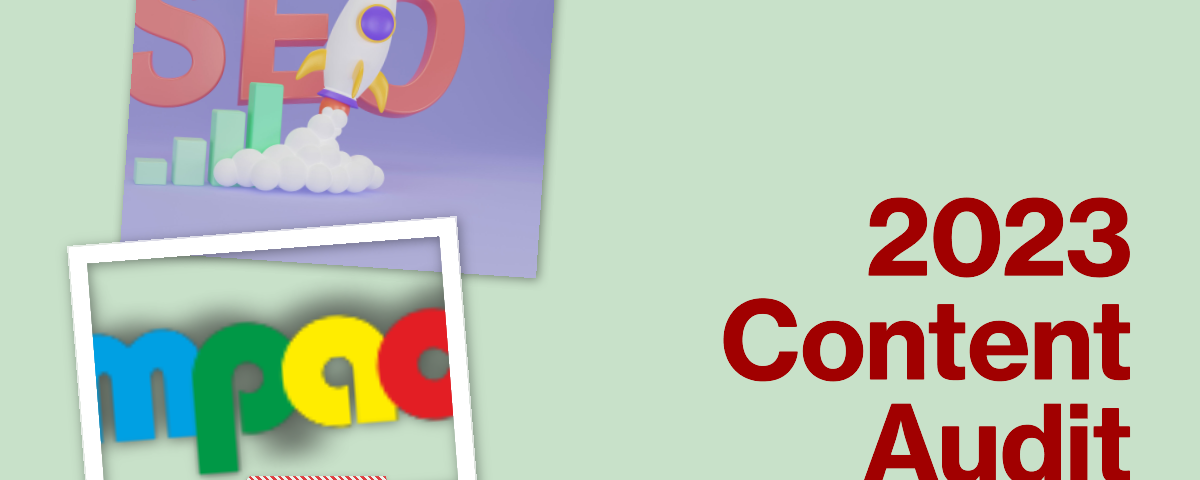Are you looking to conduct a content audit in 2023? Then you’ve come to the right place. A content audit is a great way to take stock of what content you have, how it’s performing, and what needs to be changed. By conducting a content audit in 2023, you can determine which content is working and which isn’t, helping you create more effective content strategies moving forward. In this guide, we’ll provide a step-by-step content audit guide for 2023 to help you get started.
[Mid Year Sale on Envato Market is now LIVE – Get up to 50% off here]
Table of Contents
Define your goals for a content audit:
Before diving into the nitty-gritty of conducting a content audit, it’s important to define your goals. Why are you conducting a content audit in the first place? What do you hope to achieve?
There are many different reasons why someone might conduct a content audit, but most often it is to improve the effectiveness of their content marketing efforts. Content marketing has become a crucial component of any successful digital marketing strategy, but it can be a challenge to know whether or not your content is actually achieving its intended goals.
[Code Canyon get up to 50% Discount Today here]
So, start by identifying what those goals are. Are you hoping to increase traffic to your website? Are you trying to generate more leads or sales? Do you want to establish yourself as a thought leader in your industry? Or maybe you just want to create more engaging content for your audience. Whatever your goals may be, make sure they are specific and measurable. This will make it easier to track your progress and evaluate the effectiveness of your content audit. Once you have clearly defined your goals, you can begin to move on to the next steps in the content audit process.
Some common goals for a content audit are:
– To improve the SEO ranking and organic traffic of your website
– To increase the engagement and conversion rate of your website visitors
– To align your content with your buyer personas and customer journey stages
– To update or remove outdated, inaccurate, or low-quality content
– To identify and fill content gaps in your topic clusters or pillar pages
– To streamline your content creation and management process
Do your research
Once you have clearly defined your goals for conducting a content audit in 2023, it’s time to move onto the research phase. This is an important step as it lays the foundation for all your subsequent analysis and decision-making.
When it comes to researching your content, there are a few key areas to focus on. The first is your audience. Who are they? What are their pain points and interests? What motivates them? By answering these questions, you can get a better sense of what kind of content will resonate with them and what topics you should prioritize moving forward.
The second area to focus on is your competitors. What are they doing well in terms of content marketing? Are they ranking higher in search results? What social media platforms are they using and what type of content is performing best for them? By conducting a thorough analysis of your competitors, you can gain valuable insights into what’s working and what’s not in your industry.
Finally, it’s important to analyze your own content. Take an inventory of all your existing content and assess its quality, relevance, and effectiveness. Look at metrics such as page views, bounce rate, social shares, and engagement to get a sense of how each piece is performing.
Some Inventory for your:
– URL
– Title
– Content type (e.g., blog post, ebook, video, etc.)
– Topic or category
– Author
– Publication date
– Last updated date
You can use various tools to help you create a content inventory, such as:
– Screaming Frog: A web crawler that can scan your website and extract key information about each page.
– Google Analytics: A web analytics tool that can provide data on the traffic, behavior, and performance of each page.
– HubSpot: A marketing software that can help you organize and manage your content assets. Alternatively, you can also create a content inventory manually by browsing through your website and copying the information into a spreadsheet.
By doing this research, you’ll be able to identify gaps in your content marketing strategy and make informed decisions about where to focus your efforts moving forward. Remember, a successful content audit isn’t just about getting rid of underperforming content – it’s also about identifying opportunities to create new content that will resonate with your audience and drive engagement.
Analyze your findings
Once you’ve collected all the data from your research, it’s time to analyze it and start making decisions. Look for trends in your data and use that information to determine what’s working and what’s not.
Start by categorizing your content into different groups. This could be based on the topic, format, or platform. From there, you can determine which categories are performing well and which ones need improvement.
Some common criteria for analyzing your content are:
– Quality: How well-written, accurate, informative, engaging, and persuasive is your content? Does it meet the expectations and needs of your audience? Does it follow your brand voice and style guidelines?
– Relevance: How relevant is your content to your target keywords, topics, personas, and stages of the customer journey? Does it match the search intent and context of your audience? Does it provide value and solutions to their problems or goals?
– Effectiveness: How well does your content perform in terms of SEO, traffic, engagement, and conversion? How does it compare to your competitors’ content? What are the strengths and weaknesses of your content?
– Optimization: How well is your content optimized for SEO and user experience? Does it have clear and compelling titles, meta descriptions, headings, and calls-to-action? Does it use relevant keywords, internal and external links, images, videos, and other multimedia elements? Is it mobile-friendly and fast-loading?
– Freshness: How up-to-date is your content? Does it reflect the latest trends, data, and best practices in your industry or niche? Does it need to be updated or removed?
To analyze your content, you can use various tools and sources of data, such as:
– Google Search Console: A webmaster tool that can help you monitor and improve your website’s performance in Google search results. It can provide data on your website’s visibility, ranking, clicks, impressions, keywords, errors, and more.
– Google PageSpeed Insights: A web performance tool that can help you measure and optimize the speed and usability of your website on mobile and desktop devices. It can provide data on your website’s loading time, performance score, opportunities, and diagnostics.
– Moz: An SEO software that can help you analyze and improve your website’s SEO performance. It can provide data on your website’s domain authority, page authority, backlinks, keywords, ranking, and more.
– SEMrush: A digital marketing tool that can help you analyze and improve your website’s SEO, PPC, social media, content marketing, and competitive research. It can provide data on your website’s traffic, keywords, ranking, backlinks, competitors, content gaps, topic ideas, and more.
– BuzzSumo: A content marketing tool that can help you analyze and improve your website’s content performance. It can provide data on your website’s social media engagement, content trends, influencers, content types, content length, headlines, questions, and more.
Dig deeper into each category and analyze the individual pieces of content. Look at engagement metrics like page views, social shares, and comments. Are there certain pieces that are getting more engagement than others? Are there common elements in those pieces, like a certain topic or format?
Don’t forget to also consider the qualitative data, like customer feedback or user testing results. This can give you insights into what people are really thinking about your content and help you identify areas that need improvement.
Based on your analysis, create a list of action items for each category or individual piece of content. This could include updating outdated information, creating new content to fill gaps, or testing out new formats.
Remember, the analysis phase is all about identifying what’s working and what’s not. Be willing to make changes and try new things to improve your content strategy.
Implement your plan
After analyzing your findings from the content audit, it’s time to implement your plan. This means making changes and improvements to your existing content strategy based on the insights and data you’ve gathered.
Here are some key steps to follow when implementing your plan:
1. Prioritize your action items: Based on your analysis, identify the most important changes to make first. This could be updating outdated content, creating new content in certain areas, or improving the overall user experience on your website.
2. Set realistic timelines: It’s important to be realistic about how long it will take to implement each change. Consider your team’s capacity and any other factors that could impact your timeline.
3. Assign responsibilities: Make sure each team member knows their role in implementing the plan. Assign clear responsibilities and deadlines to keep everyone on track.
4. Test and measure: As you make changes, be sure to track their impact. Use analytics tools to monitor changes in website traffic, engagement, and other metrics. This will help you identify what’s working and what’s not, so you can adjust your approach as needed.
5. Stay flexible: Remember that your content strategy is always evolving. Be prepared to make adjustments as you gather new data and insights. And be willing to experiment with new tactics to see what works best for your audience.
Implementing your plan can take time and effort, but it’s a crucial step in ensuring your content strategy is effective and engaging for your target audience. By taking a data-driven approach to your content audit, you’ll be well-positioned to make informed decisions and see positive results.
[Read: 10 Types of Interactive Content]
Evaluate your results
After implementing your plan, it’s important to evaluate your results to determine the success of your content audit. This is a crucial step in the process, as it will provide you with valuable insights into what worked well and what didn’t. Here are some key metrics to consider when evaluating your results:
Traffic: Look at your website traffic and determine if there has been an increase or decrease since the audit. This will help you understand if your content changes have had a positive or negative impact on your audience.
Engagement: Monitor engagement on your content, such as comments, social shares, and likes. These metrics can provide you with valuable feedback on what your audience enjoys and what they don’t.
Conversion rate: Check your conversion rate, such as sales, sign-ups, or downloads, to determine if your changes have positively affected your business goals.
SEO rankings: Look at your search engine rankings to see if your content audit has positively impacted your SEO efforts. Improving your SEO rankings will increase your website’s visibility, resulting in more traffic and potential conversions.
By evaluating these metrics, you’ll have a clear understanding of what worked well and what didn’t, allowing you to adjust your strategy for the future. It’s important to continually analyze and evaluate your content, as your audience and goals may change over time. Remember to keep track of your progress and make changes accordingly to ensure your content stays relevant and effective.




